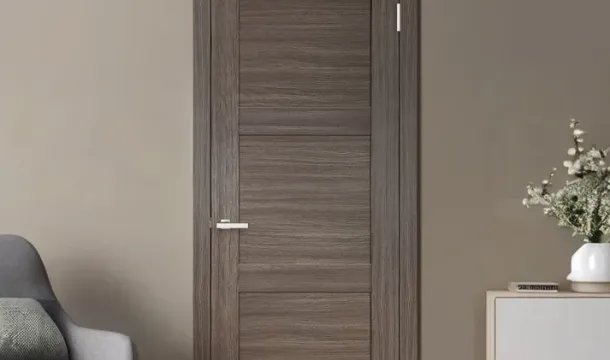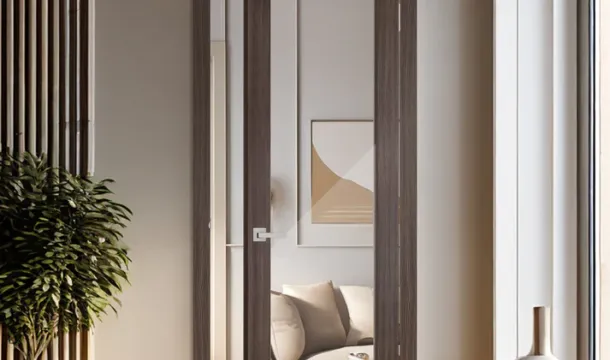Best Finishes for Durable High Traffic Interior Doors
Popular Articles
Polyurethane finishes stand out as the most resilient option for interior doors exposed to heavy use. Their resistance to scratches, moisture, and impact makes them ideal in busy households or commercial spaces. Opt for a water-based polyurethane if you want a clear finish that won't yellow over time, especially on lighter wood species.
Conversion varnishes provide superior hardness and chemical resistance compared to traditional lacquers or shellacs. Although more expensive and requiring professional application, they deliver a durable surface that withstands frequent cleaning and daily wear with minimal maintenance.
Hardwax oils combine natural oil penetration with a protective wax layer, allowing the wood grain to remain visible while adding robustness. They require periodic reapplication but offer excellent repairability without stripping the entire door finish, making them practical for residential high traffic areas.
For painted doors, satin or semi-gloss acrylic enamel paints offer both aesthetic appeal and toughness. These paints resist chipping and scuffing better than flat or eggshell finishes, ensuring longevity even with constant contact from hands, bags, or pets.
Comparing Durability of Door Finishes
Polyurethane finishes outperform other options in resistance to scratches, stains, and moisture. Their hard, plastic-like surface forms a robust barrier ideal for high traffic interior doors. Water-based polyurethane offers faster drying times and less yellowing compared to oil-based variants, making it preferable for lighter woods or painted doors.
In comparison, lacquer provides a smooth, glossy look but tends to be softer and more prone to chipping under frequent use. It requires careful application and maintenance to retain durability in busy environments. Conversion varnish combines some benefits of lacquer and polyurethane by curing into a tougher coat; however, it's more complex to apply professionally.
Penetrating Oils vs. Surface Coatings
Penetrating oil finishes like tung or Danish oil soak into the wood rather than forming a protective film. While they enhance natural grain appearance and resist minor wear, their surface protection is limited. These finishes often need annual reapplication in heavy-use areas to maintain integrity.
Hardwax oils blend penetrating oils with surface waxes, improving abrasion resistance without sacrificing natural texture. They strike a balance between ease of repair and moderate durability but still fall short compared to polyurethane or conversion varnishes under intense traffic conditions.
Epoxy and Polyester Coatings
Epoxy coatings deliver exceptional toughness and chemical resistance but tend to yellow over time and require professional installation. Polyester finishes are highly resistant to impact and abrasion yet involve complicated application processes suited mostly for commercial-grade doors rather than residential interiors.
Selecting the right finish depends on the expected wear level. For Canadian homes with children or pets, water-based polyurethane provides an optimal combination of longevity, ease of maintenance, and aesthetic flexibility without extensive upkeep demands.
Maintenance Tips for Long-Lasting Coatings
Clean high-traffic interior doors regularly using a soft cloth and a mild detergent solution to avoid buildup of dirt and oils that degrade finishes. Avoid abrasive cleaners or scrubbing pads, which can scratch or dull the coating. For oil-based or polyurethane finishes, use mineral spirits sparingly to remove stubborn spots without damaging the surface.
Apply a fresh coat of protective finish every 1-3 years depending on wear intensity. Lightly sand the door with fine-grit sandpaper (220 grit) before recoating to promote adhesion and smoothness. Ensure proper drying time in low-humidity environments to prevent cloudiness or tackiness in the finish.
Protective Measures Against Physical Damage
Install door hardware such as kick plates or corner guards in areas prone to impact and scuffing. Use felt pads under door handles and hinges to minimize friction marks. Keep pet nails trimmed to reduce scratches, especially on softer wood finishes.
Environmental Controls
Maintain stable indoor humidity levels between 30% and 50% to prevent wood expansion that can cause cracking or peeling of coatings. Avoid prolonged exposure to direct sunlight by using window treatments, since UV rays accelerate fading and breakdown of clear finishes.
Choosing Finish Based on Door Material
For solid wood doors, oil-based polyurethane offers superior penetration and hardness, enhancing natural grain while resisting dents and scratches common in high-traffic areas. Water-based polyurethanes dry faster and emit fewer odors but may require multiple coats for comparable durability. Avoid wax finishes on hardwoods exposed to frequent contact, as they lack protective strength.
Engineered wood or MDF doors benefit from high-quality lacquer or acrylic finishes that form a hard, protective layer without causing warping. These finishes provide excellent resistance to moisture and abrasions, preserving the door's smooth surface over time. Stains with a clear topcoat can also work well if maintaining a wood-like appearance is desired.
Metal doors demand coatings designed for adhesion to metal substratespowder coating delivers a tough, chip-resistant surface ideal for commercial-grade interior doors. Alternatively, epoxy-based paints offer strong chemical resistance and durability under heavy use. Avoid using standard wood finishes here, as they won't properly bond or protect the metal surface.
For glass panel inserts within doors, select finishes that complement the surrounding frame material without compromising clarity or adhesion. Clear sealants with UV inhibitors prevent yellowing and maintain aesthetic integrity. When combining materials like wood and glass, ensure the finish on the frame accommodates expansion differences to avoid cracking.
Popular Articles

Soundproofing Interior Doors: Which Options Are Best for Your Home?

Choosing the Perfect Interior Doors for Your Canadian Home
